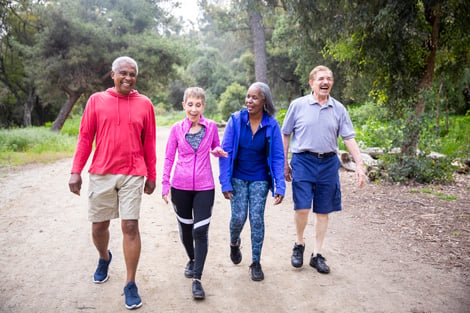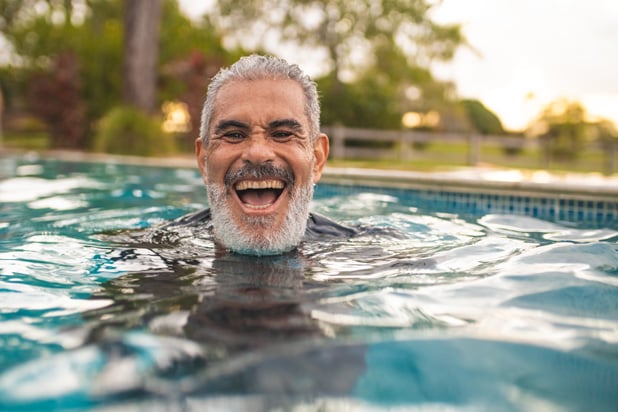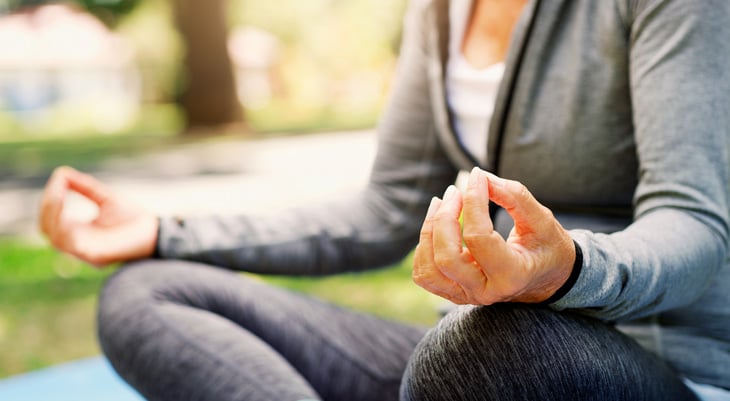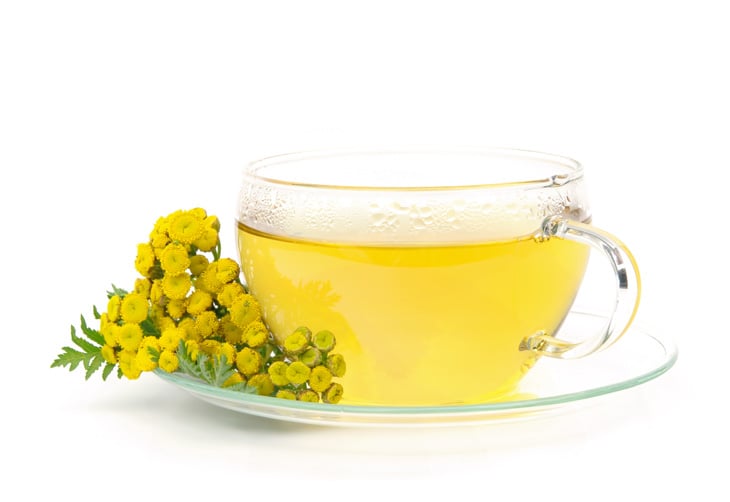
11 Alternative Treatments for Chronic Pain in Seniors
Living with the same pain day in and day out can be excruciating. Suffering from carpal tunnel, arthritis, or joint pain can lead to a lifetime of frustration and difficulty. Things that were once simple day to day activities can become a difficult process that can sometimes require help.
Prescription pain management can be provided in most cases of chronic pain, however, it is not for everyone. For those who try to avoid prescriptions, we have come up with some alternative treatments for you or your senior loved one’s chronic pain.
Walking

Alternative treatments to chronic pain can be as simple as walking. Walking helps decrease joint stiffness and can be performed anywhere. It does not cost any money and does not have to be time consuming. Walking has been shown to reduce pain, promote mental health and lower blood sugar. This can have not only a huge impact on reducing the chronic pain you or your senior loved one may be experiencing, but it can also improve overall health.
Bodyweight Training
Don’t worry, this isn’t as intense as you’re thinking. Bodyweight training can help prevent muscle loss, which can be a cause of chronic pain. Increasing muscle and balance as a senior is crucial to maintain a healthy lifestyle and can also be an alternative treatment for chronic pain. Don’t have access to a gym? Don’t worry. Bodyweight training can be done at home or in the gym with simple exercises like chair squats and stair climbing.
Swimming
If you or your senior loved one likes to be active but struggles to participate in traditional forms of exercise due to chronic pain, swimming can be an excellent alternative. Swimming can be used to combat muscle and joint stiffness, along with back pain. Swimming will get you moving all your muscles and joints while being gentle on them. Because humans have buoyancy, swimming eases and supports the muscles and joints of the body. It offers a softer and slower movement that helps the body heal at a steadier rate than activities on land would. It also reduces the risk of osteoporosis.
Yoga
Yoga is a Hindu based spiritual practice that focuses on breathing, simple meditation and specific body postures that promote relaxation and health. Yoga is another great way to get in some physical activity at a slower pace. Similar to Pilates, yoga has been shown to improve balance and strengthen muscle tone. Yoga has also been found to improve a person’s overall mood. There are many different types of yoga, which makes it a great option for beginners and skilled yogis alike. Many continuing care retirement communities offer yoga classes, which is great for people just starting out or those who may need additional assistance.
Pilates
Pilates is very similar to yoga. Pilates is specifically helpful for those who may suffer from back pain. It uses slow movement to help increase core strength and balance. Strengthening your deep abdominal muscles offers more support to your back, helping to reduce pain. It is very common to see Pilates offered in gyms and at continuing care retirement communities. Signing up for a local Pilates class can help not only as an alternative treatment to chronic pain but also help you or your senior loved one to get out and about and experience a sense of community. Although Pilates is easily accessible at home, caution should be taken to prevent injuries when practicing alone.
Meditation
Meditation is not only good for the mind, but the body as well. Much like yoga, meditation can increase your overall mood and energy. Meditation activates the part of the brain that processes pain. Because of that, meditation has shown to help reduce pain intensity in patients. It also provides a decrease in stress, which leads to a decrease in pain. Another benefit to this alternative treatment for chronic pain, is a boost in the immune system. It can help control blood pressure while also reducing chronic aches and muscle tension.
Acupuncture
This alternative treatment for chronic pain was originated in China and uses very thin needles to prick the skin or tissue to help relieve physical pain. Acupuncture has incredible benefits and has been found to help treat many common disorders found in seniors, including arthritis pain, digestive issues, and eye and mouth disorders. Acupuncture has also shown promising benefits for emotional and mental ailments like anxiety and depression.
Aromatherapy
Aromatherapy is a great natural remedy for chronic pain. It uses your sense of smell to help relieve stress, anxiety and even physical pain. Essential oils from natural plants like lavender can help with pain relief like migraines and headaches. Rosemary has also been found to be an alternative treatment to chronic pains like migraines, muscle and bones pains and sometimes even seizures. If you or your senior loved one is trying to avoid prescription pain medication and physical activity is difficult, this treatment path could be a good option.
Feldenkrais
Do you or a loved one worry about falling? Feldenkrais is something that can help relieve those worries. Like yoga and meditation, Feldenkrais uses movement to help people live more comfortably and improve their movement. It helps with balance, muscle strengthening and awareness. Feldenkrais can help with muscle tension, back, and hip pain. Many people all around the world who have used the Feldenkrais method have said it has helped them avoid the use of pain medication all together.
Naturopathy
Naturopathy is a natural treatment to chronic pain using techniques like diet control, massage and exercise. Naturopathy is non-invasive and promotes self-healing. Some other forms of naturopathy are spending time in the sun, taking daily vitamins, eating more vegetables, and mushrooms. Mushrooms have been found to help the production of immune cells. Naturopathy has been proven effective for chronic pains like tension headaches, arthritis and sciatica.
Feverfew
Feverfew is a medicinal plant that has helped treat a variety of different chronic pains. Some examples include toothaches, rheumatoid arthritis, migraines, fevers and stomach pains. Though feverfew can be beneficial, it does have some side effects. Side effects can include anything from small abdominal pain to an increased risk of bleeding. It is very important to note that you or a loved one should seek guidance and expertise from a doctor before using this natural remedy.
Don’t let chronic pain take control of your life! Alternative treatments can offer a wide range of both spiritual and physical activities in treating chronic pain. These natural and simple alternatives can be great in place of prescription pain medication. It is our hope that the alternative treatments we have listed above will help you or a loved one find a more natural means of overcoming chronic pain.
If chronic pain begins to take control of yours or your senior loved one’s life, download our checklist to see if Continuing Care Retirement Communities would be beneficial for you.
About Erynn Lynch
Recently, Presbyterian Senior Living teamed up with the Communication/Journalism Department at Shippensburg University to provide students with professional writing experience. This opportunity allows students to not only learn the ins and outs of blog writing but also offers them a platform for published works. This author is a Communication/Journalism student at Shippensburg University.



